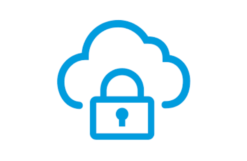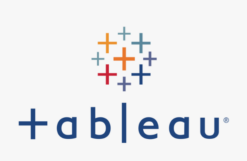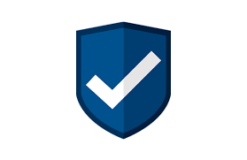Duration: 5 days – 35 hrs.
Overview
Welcome to the MariaDB Administration Training Course, a comprehensive program designed to equip you with the skills and knowledge needed to effectively manage and optimize MariaDB databases. This course is ideal for database administrators, IT professionals, and developers seeking to enhance their expertise in MariaDB administration.
Objectives
- Learn to install and configure MariaDB on various platforms.
- Understand MariaDB server files and programs.
- Configure server options and system variables.
- Implement security measures to protect MariaDB instances.
- Manage user accounts, access privileges, and passwords.
- Master database maintenance, including backup and recovery.
- Monitor MariaDB using log files and performance statistics.
- Run multiple MariaDB servers in different environments.
- Utilize the query cache for enhanced performance.
- Explore advanced techniques like dynamic columns and virtual columns.
- Optimize and tune MariaDB for improved efficiency.
Audience
- Database Administrators: Professionals responsible for managing and maintaining MariaDB databases.
- IT Managers: Managers overseeing database operations and IT infrastructure.
- Developers: Those interested in learning how to manage and optimize databases for their applications.
- System Administrators: Admins seeking to enhance their skills in MariaDB management.
- Data Analysts: Analysts who work with data stored in MariaDB databases.
- Database Engineers: Engineers involved in designing, developing, and maintaining database systems.
- Technical Leads: Leaders overseeing database-related projects and teams.
- IT Professionals: Professionals in IT roles looking to expand their database management skills.
- Software Engineers: Engineers integrating database functionality into applications.
- Technology Enthusiasts: Individuals interested in mastering MariaDB for various purposes.
Pre- requisites
- Basic understanding of database concepts.
- Familiarity with SQL and relational databases.
- Basic knowledge of Linux/Unix commands (for certain topics).
- No prior experience with MariaDB required.
Course Content
Installing MariaDB server
- Installing in Ubuntu/Debian
- Installing in other Linux Distributions
- Installation on Windows
MariaDB Server Files and Scripts
- MariaDB Programs
- MariaDB Server
- MariaDB Client
- GUI Tools
MariaDB Server Configuration
- Server Options
- The Server SQL Mode
- Server System Variables
- Dynamic System Variables
- Server Status Variables
- Shutdown Process
MariaDB Security Issues
- Securing MariaDB Against Attacks
- Security-Related Options
- Security Issues with LOAD DATA LOCAL
MariaDB Access Privilege System
- MariaDB Privilege System Overview
- Privileges Provided by MariaDB
- Connecting to the MariaDB Server – Stages
- Access Control, Stage 1: Connection Verification
- Access Control, Stage 2: Request Verification
- Access Denied Errors
MariaDB User Account Management
- Users and Passwords
- Creating New Users
- Deleting User Accounts
- Limiting User Resources
- Changing Passwords
MariaDB Database Maintenance
- Backup and Recovery
- Point-in-Time Recovery
- Maintenance and Crash Recovery
- myisamchk Syntax and Options
- Getting Table Information
- MariaDB Local Setting
- National Characters and Sorting
- MariaDB Server Time Zone
MariaDB Log Files
- Error Log
- General Query Log
- Update Log
- Binary Log
- Slow Query Log
- Log File Maintenance and Rotation
Running Multiple MariaDB Servers on the Same Machine
- Running Multiple Servers in Windows
- Running Multiple Servers in Windows as Services
- Running Multiple Servers in Unix and Linux
- Using Client Tools in a Multi-Server Environment
MariaDB Query Cache
- The Concept of Query Cache
- Testing Query Cache with SELECT
- Configuring Query Cache
- Checking Query Cache Status and Maintenance
The CONNECT Storage Engine
- Installing the CONNECT storage engine
- Creating and dropping CONNECT tables
- Reading and writing CSV data using CONNECT
- Reading and writing XML data using CONNECT
- Accessing MariaDB tables using CONNECT
- Using the XCOL table type
- Using the PIVOT table type
- Using the OCCUR table type
Exploring Dynamic and Virtual Columns in MariaDB
- Creating tables with dynamic columns
- Inserting, updating, and deleting dynamic column data
- Reading data from a dynamic column
- Using virtual columns
Performance and Usage Statistics
- Installing the Audit Plugin
- Using the Audit Plugin
- Using engine-independent table statistics
- Using extended statistics
- Enabling the performance schema
- Using the performance schema
Optimizing and Tuning MariaDB
- Using SHOW STATUS
- Controlling MariaDB optimizer strategies
- Using extended Keys with InnoDB and XtraDB
- Configuring the MyISAM segmented key cache
- Configuring threadpool
- Configuring the Aria pagecache
- Optimizing queries with the subquery cache
- Optimizing semijoin subqueries
- Using microseconds in DATETIME columns
- Updating the DATETIME and TIMESTAMP columns automatically








